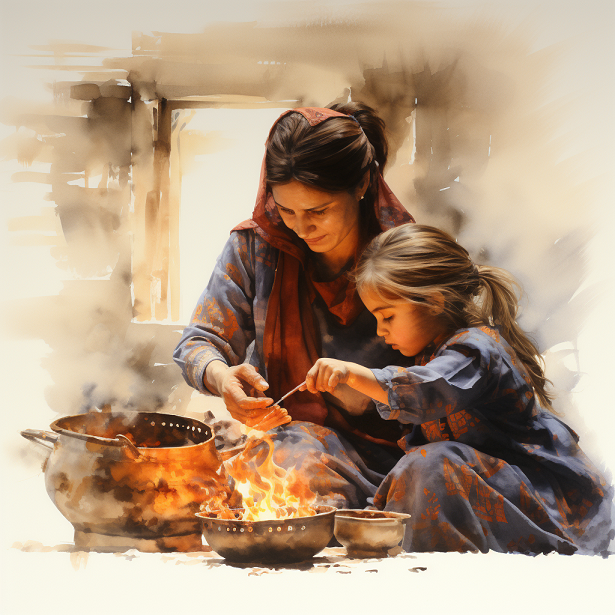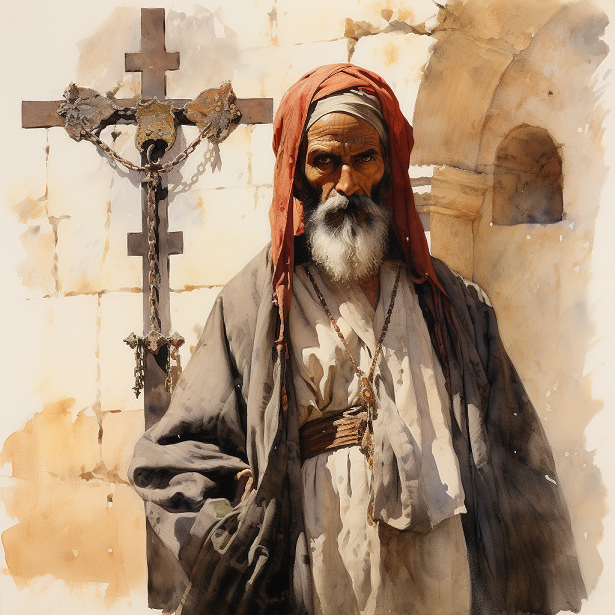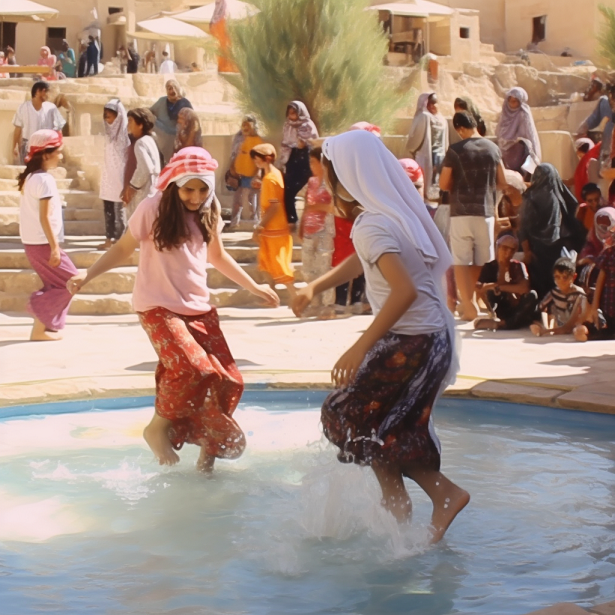In the annals of adventurous women who defied the societal norms of their era, Gertrude Bell stands as an indomitable force. A pioneering traveller, archaeologist, and diplomat, Bell’s insatiable curiosity led her on remarkable journeys through the heart of the Middle East during the early 20th century. Among her many exploits, her explorations through the mystic hills of Kurdistan, a land steeped in ancient lore and captivating landscapes, offer a captivating glimpse into a world where history, culture, and the raw beauty of nature intertwine.
Embarking on a quest to uncover the secrets hidden within the rugged folds of the Kurdish mountains, Gertrude Bell’s experiences, chronicled with meticulous detail, paint a vivid tableau of a region at the crossroads of civilizations. From the sacred tombs and revered shrines to encounters with the enigmatic Yezidi people, Bell’s narrative invites readers to traverse the same paths she once tread, unveiling the richness of Kurdistan’s past and the resilience of its people. Join us as we delve into the pages of Bell’s travelogue, exploring the captivating tapestry of the mystic hills she traversed.
Amadiyeh
Nestled within the cradle of the Kurdish mountains, Amadiyeh emerges as a town that not only paints a picturesque panorama but also whispers secrets of ages long past. Gertrude Bell, with her intrepid spirit, wove her way through the labyrinth of ruins and alleys that embody the rich historical tapestry of Amadiyeh. As she stood amid the remnants of ancient civilizations, the stones spoke tales of conquests, trade, and the ebb and flow of cultures that have left an indelible mark on this mountainous enclave.
However, Amadiyeh isn’t just a silent witness to history; it is a living canvas where the Yezidis, with their unique beliefs and traditions, add vibrant strokes to the cultural landscape. Bell’s encounters with the Yezidi people unfurl a fascinating exploration into a community shrouded in mysticism. Their sacred tombs and revered shrines become portals to a world where the spiritual and earthly realms converge, echoing with the whispers of rituals and ancient rites.
Sheikh ‘Adi: A Sanctuary of Spiritual Splendour
Gertrude Bell’s journey leads her to the hallowed sanctuary of Sheikh ‘Adi, a place where the temporal and the divine converge in a sublime dance. The tomb, a testament to centuries gone by, stands as a silent guardian, preserving the legacy of a mystic who left an indelible mark on the Yezidi faith. Bell’s vivid descriptions transport us to the aisled hall, the low door in the eastern wall, and the small chamber illuminated by the flickering light of a lamp.
The sacred waters flowing from the well Zemzem at Mecca intertwine with the narrative, leading Bell to tread upon a watery floor, a symbolic act transcending the mundane and invoking the awe-inspiring shades of sanctity. The Yezidi khatun’s trepidation and Bell’s steadfastness create a poignant tableau, underscoring the reverence bestowed upon this sacred ground.
As the journey continues, Bell becomes a spectator to the vibrant tapestry of the summer festival at Sheikh ‘Adi. Amid the ancient stones and echoing chants, the Yezidis partake in rituals that bridge the gap between the earthly and the divine, providing a glimpse into a world where spirituality intertwines with the changing seasons.

Malthai and Rabban Hormuzd: Echoes of Ancient Civilizations
In the labyrinth of time and stone, Gertrude Bell encounters Malthai and Rabban Hormuzd, two sites that echo with the whispers of ancient civilizations. The Assyrian reliefs at Malthai, dating back to the reign of Shalmaneser II, unveil a vivid tableau of kings and gods, an artistic expression that transcends the boundaries of millennia.
Rabban Hormuzd, with its Nestorian roots, stands as a sentinel on the hills above Alkosh, a witness to the ebb and flow of empires and the enduring spirit of faith. The prior, Kas Elyas, becomes Bell’s guide through the tiers of the monastery, a structure that stands as a testament to the enduring resilience of ancient architecture.
In these archaeological realms, Bell immerses herself in the intricacies of craftsmanship and the enigmatic messages etched in stone. From the flowering grasses near Alkosh to the roaring waters of the Khabur, the landscapes themselves become narrators, weaving a tapestry of history, faith, and the inexorable passage of time.
Kurdish Strongholds: Za’feran and the Fortress Ruins
As Gertrude Bell traverses the Kurdish landscape, her footsteps echo through the fortress ruins of Za’feran, a silent witness to the interplay of Byzantine history and the rugged Kurdish terrain. The octagonal tower, a relic of centuries past, bears witness to a confluence of cultures and architectural prowess that defies the eroding touch of time.
Beyond Za’feran, the Kurdish strongholds, scattered like sentinels across the mountainous expanse, become waypoints in Bell’s odyssey. These fortifications, born from the necessity of protection, reveal the geopolitical intricacies that have shaped the region for centuries.
In the shadow of these formidable structures, Bell captures the essence of a land where fortresses rise like silent guardians, their stones narrating tales of invasions repelled and civilizations protected. The panoramic views from these heights become portals into history, allowing us to stand alongside Bell, peering into the horizons of a land where the past and present converge.
Journey to Zakho: Bridging History and Modernity
As Gertrude Bell’s odyssey unfolds, the ancient town of Zakho emerges as a gateway, both geographically and historically, to the Kurdish mountains. Positioned at the confluence of the Khabur River’s arms, Zakho is not merely a town but a portal to the complex narratives woven by empires, traders, and the resilient inhabitants of the Kurdish highlands.
The enigmatic castle that stands sentinel over Zakho becomes a focal point in Bell’s exploration. Its octagonal tower, a marriage of architectural finesse and historical epochs, rises above the town, whispering tales of conquests and the ebb and flow of cultures. As Bell navigates the labyrinth of its ruins, she unravels the layers of history, each stone bearing witness to the passage of time.
Christian Quarters of Zakho: Resonance of Missionary Footsteps
The Christian quarters on the right bank of the Khabur become a canvas where Gertrude Bell paints a poignant picture of coexistence amid the Kurdish landscape. Here, the stone structures house not only the echoes of ancient rituals but also the resilient spirit of a community navigating the currents of time.
In these quarters, Bell encounters traces of Soldini, the first missionary to Kurdistan, whose footprints linger in the stones and alleys. As she meanders through the Christian heart of Zakho, Bell unveils a narrative where the spiritual and secular dance in harmony, leaving an indelible mark on the cultural fabric of the region.

A Tapestry Woven in Stone and Spirit
Gertrude Bell’s sojourn through the mountains and valleys of Kurdistan becomes a journey through time itself. As she treads upon the stones laid by ancient hands and engages with the living traditions of the Yezidis, the landscape transforms into a living tapestry where history and spirituality converge.

